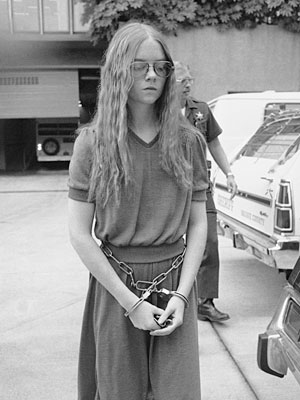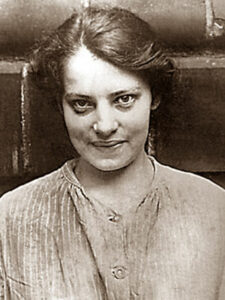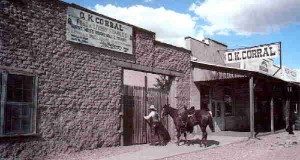“Ugh, it’s Monday” are the words that usually follow the arrival of the most dreaded day of the week. The sighs floating in the air are palpable and nothing seems possible. Mondays always carry with them a negative connotation and contain components such as depression, fatigue, and anguish. But to a San Diego elementary school, and to a troubled sixteen year old, Monday, January 29, 1979 held an even more distressing meaning.

Students at Grover Cleveland Elementary School, located in San Diego, California, began what they believed would be a normal Monday morning like any other, with bells ringing and students racing to their classes. Little did they know, however, that across the street, sixteen-year-old Brenda Ann Spencer was aiming her .22 caliber semiautomatic rifle right at society’s ultimate refuge, the elementary school, and its surroundings. After the first bell rang, Brenda broke the panels on the front door of her home, which was located right across the street from the elementary school. And she began to fire. The school’s principal, Burton Wragg, while rushing outside, was hit on the shoulder and chest with Spencer’s bullets and eventually died. Michael Suchar, the school’s custodian, ran outside with a blanket in order to cover Wragg and keep him from going into shock, but he quickly became the second victim of Spencer’s shooting and lost his life. In between all the chaos, 28 year old Robert Robb, a recent graduate of the police academy, while examining Wragg’s and Suchar’s bodies, was shot under his right shoulder blade.1 He would go on to survive though, along with the eight other children who were wounded in the incident. At least three of those children had abdominal wounds. A nine-year-old student, Cam Miller, was struck in the back with a bullet that exited through his chest without hitting any internal organs. Another, Christy Buell, was shot through her abdomen and in the buttocks, and had to undergo surgery in order to repair her intestine.2
When Gus Stevens, a reporter for the San Diego Evening Tribune, began calling around the area to gain more information about the shooting, he coincidentally placed a call to Spencer’s home where she gave him exactly what he wanted. She described the shooter, a sixteen year old, and the shooter’s address. When Stevens realized that she gave him her own address, he recognized what was going on and requested an interview while another staff member informed the police of the situation. The police, now aware of where the shots were coming from, were able evacuate the children and obstruct Spencer’s line of sight while trying to negotiate with her. After several hours, Brenda Spencer surrendered her weapon and several rounds of ammunition, and was subsequently arrested. While on the phone with Stevens, Spencer had stated that she was just shooting for the “fun of it.” She went on to say that she just didn’t like Mondays and did this “because it’s a way to cheer up the day.”3

Contrary to her initial claim, she later went on to state in her 2001 parole hearing that she had been “sexually abused by [her] father” and was “waiting for the cops to show up so they could shoot [her].”4 This new information has fueled many more theories today about Brenda Spencer’s true motives in committing such a crime. During her pretrial psychological testing, an injury to Spencer’s temporal lobe came to light. Spencer has also stated in a letter from prison that she experiences “grand mal seizures” that she has to counteract with medications.5 Such a brain injury would definitely be a precursor to epilepsy, which is two to four times more common among violent offenders than the public.6 The lack of treatment she received for this disease, to some, proves the neglect that she experienced from her family and in her childhood. Psychologist Jonathan Fast introduces the idea that her brain injury, abuse, and the effects of it pushed her to her final actions. He believes that the shame, ridicule, inferiority, and powerlessness that she felt encouraged her to go as far as she did. In another letter she wrote in prison, she stated that her “father had done everything a person could do to another person. The beatings, the touching, the emotional abuse.” She went on to state that no one, not teachers or counselors, gave her assistance through this, so she simply thought that this was how the world and how life worked. When her father gifted her the .22 caliber rifle, she thought that he was finally telling her to do it: to take her life successfully, unlike her past suicide attempts, and leave the world forever.7
Whether these theories are true or not, Brenda Spencer was tried as an adult and pleaded guilty to two counts of murder and nine counts of assault. She was sentenced to twenty-five years to life in prison, and is still serving her sentence at the California Institute for Women. The shooting has inspired a song by the Boomtown Rats called “I Don’t Like Mondays,” and has also gained other media coverage through a documentary.8 Her action went down in history as the first high profile school shooting and has become a vanguard to many future, unimaginable school situations and violent outbreaks. Whether Spencer was a cold-hearted killer or a truly lost and confused soul that simply wanted an escape, it is undeniable that her horrible actions have had some frightening consequences in our modern world.
- Jonathan Fast, Ceremonial Violence (New York: The Overlook Press, 2008), 25, 70-71. ↵
- Tamara Jones, “Look Back in Sorrow,” Good Housekeeping 227, no.5 (November 1998): 118. ↵
- Jonathan Fast, “Unforgiven and Alone: Brenda Spencer and Secret Shame,” in School Shootings: International Research, Case Studies, And Concepts For Prevention, ed. Nils Böckler (New York: Springer, 2013), 253-255. ↵
- Debra Sevey, “Subsequent Parole Consideration Hearing of Brenda Spencer,” (Capitol Electronic Reporting, 2001), 15-16. ↵
- Jennifer Furio, Letters From Prison: Voices Of Women Murderers (New York: Algora Pub., 2001), 134. ↵
- Jonathan Fast, ” Unforgiven and Alone: Brenda Spencer and Secret Shame,” in School Shootings: International Research, Case Studies, And Concepts For Prevention, ed. Nils Böckler (New York: Springer, 2013), 251. ↵
- Jennifer Furio, Letters From Prison: Voices Of Women Murderers (New York: Algora Pub., 2001), 134-135. ↵
- Encyclopedia of School Crime and Violence, September 2011, s.v. “Brenda Spencer,” by Laura L. Finley. ↵



243 comments
Hannah Wilson
This was an interesting and well-written article. I was surprised that the school shooter was a 16 year old girl because you do not hear that as often. She set in motion heartbreaking events that have continued and will continue. Whether she was lost of a cold blooded killer, her actions were still hers and they were still wrong. I can not imagine the trauma that everyone at that school have been though.
Reese Lujan
Just by the title I thought this story was going to be about a kid that shot up his own school not about a teenager killing a bunch of innocent little kids. A brain injury that could have been cured but wasn’t was the result of lives of innocent little kids death. They were just at school on a Monday in their normal routine when this horrible tragedy ended up taking their life or their friends’ life. If only she would have been cured earlier.
Gloria Baca
This article was great and very well written. It is crazy to think that a sixteen year old girl willingly shot at innocent people and I’m very pleased with the great amount of detail this article provided for me. I like the way you connected Spencer’s illness as the cause of her murder spree and the amount of information you used to support it. It was very well put that not only did her early life endure the cause but also an illness. Really great job.
Natalie Childs
I had heard several people talking about this article, and wanted to give it a read. I’m glad that I did. Before this article, I wasn’t really aware of this and what had happened, though I do remember hearing Brenda Spencer’s name. This is truly a heartbreaking story on all ends, for those that died, and really for Brenda herself, if all that she claims is true. It really reiterates that we must be vigilant and care for those around us, because we never really know what they are going through.
Cristina Cabello
This is a well developed article. I find it crazy how people can be treated so poorly. Then for them to take it out on the world. No one should be treated this way. It is very unfortunate for all of the innocent children that were put into this. We hear about these shootings all the time. I am just so disturbed and grateful that it hasn’t happened to me or anyone that I know. But still I hope things can get better.
Carlos Sandoval
Wow…I never knew who Brenda Spencer was but glad I got a chance to read this article. This was very interesting, so crazy what drives people to do such horrible things like this. It is a horrible thought to think some poor little elementary school kids were shot. Every person is now seemed to have a mental illness in them and that is what makes them do this, it is a shame that no one can predict what is going to happen to someone or when they will become mentally ill.
Belia Camarena
This is a great article, and I think it is very well written. It had a story like feel to it, which made it very interesting to read. I had never heard of Brenda Spencer or of her crime, which is strange since it was the first high profile school shooting. However, I can definitely see similarities between Brenda and other school shooters, especially in their mental states.
Angelica Padilla
Very interesting article! This article was very informative and surprised me. It was very descriptive and awful to imagine how sixteen-year-old girl who shot at a school because she wanted to excite her Monday. I do feel sorry for Brenda and everything she went through at her age, though she did take the lives and injured innocent people.
Kimberly Simmons
This horrific event is one of the many cases of school shootings that continue, unfortunately, to happen today. No person should have to undergo such an event just because someone else is enraged. None of the victims deserved what happened to them, especially the innocent children. No excuse of hers can make up for what she did – no matter what she was going through, there is always another answer besides violence.
Kailan Pena
Very interesting article. I find tragic incidents like this interesting to learn about mainly because the motives behind such heinous are usually so ridiculous and obscure like in this case. All because she didn’t like Mondays. What a horrible excuse to commit such a terrible offense, I hope she rots wherever she is.